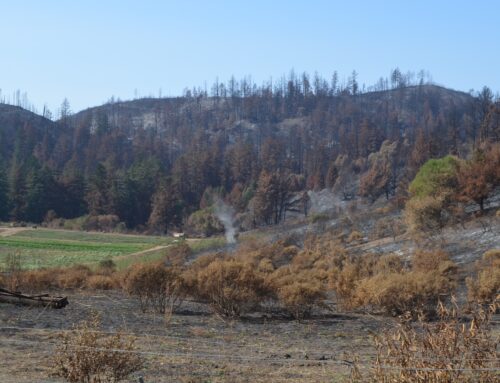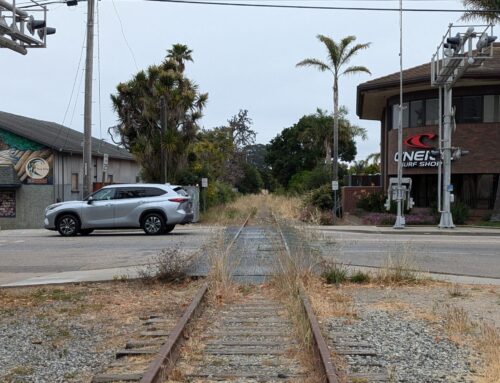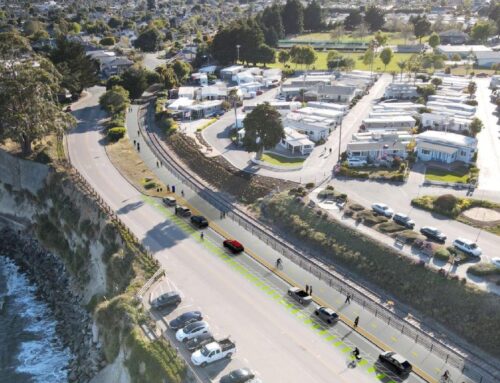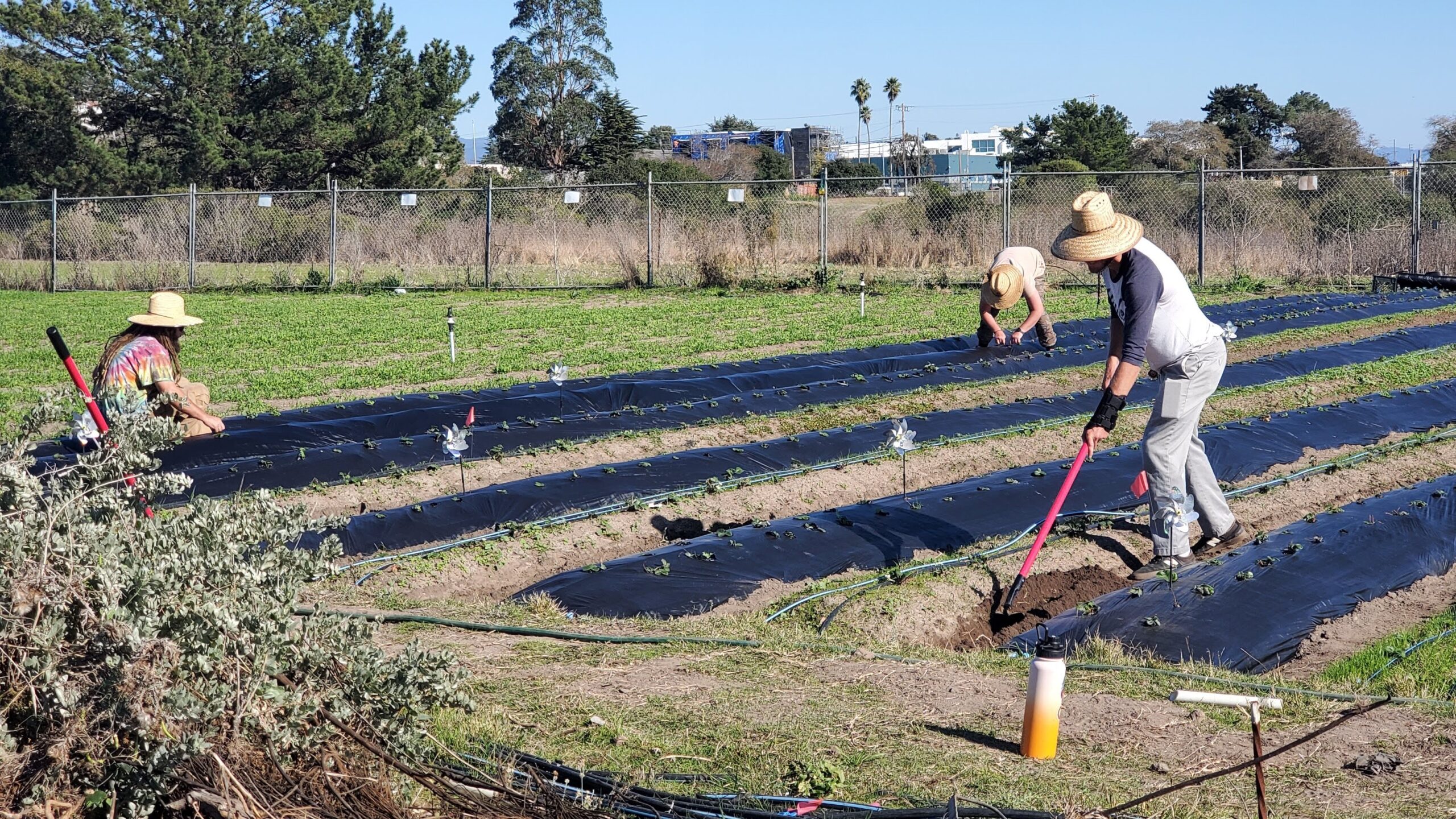
From left, Homeless Garden Project participants David Quigley and Doug King cover strawberries for the winter at the project’s farm on Shaffer Road in Santa Cruz. (Eli Ramos — Santa Cruz Local)
Clarification: The Homeless Garden Project has not ruled out a potential farm in Pogonip or at another site in Watsonville, said Homeless Garden Project Executive Director Darrie Ganzhorn.
SANTA CRUZ >> The Homeless Garden Project’s plans to relocate to Pogonip have fizzled, and leaders of the group recently signed an agreement to stay at their farm on Shaffer Road and potentially build an office, barn, greenhouse, kitchen and housing.
The Homeless Garden Project is a nonprofit group that provides unhoused people with transitional employment and job training in organic farming. Ron Swenson, CEO of Swenson Solar, owns the land where the Homeless Garden Project grows food on Shaffer Road near Delaware Avenue on the far Westside of Santa Cruz.
An October agreement between project leaders and Swenson essentially donates the farm land to the project and sells the project an adjacent area near Antonelli Pond to build and expand. The full property would be about 4 acres, Swenson said.
The land deal is not complete and the price has not been disclosed. Swenson said he hoped that zoning and permits for the farm’s expansion could finish in the next year.
“To the extent that the community is supportive, we will try to expedite the process. And I think this will be a very well-received project in the community,” Swenson said.
The additional land is roughly 1 acre and could include new homes for Homeless Garden Project staff and trainees. A multi-purpose space and commercial kitchen for the Homeless Garden Project are also in the plans. The group in recent years had pitched similar building plans for Pogonip, a city property. Those plans have not been feasible in part because of land contamination and about $5 million in required remediations to grow food.
The Homeless Garden Project has not ruled out a potential farm in Pogonip or at another site in Watsonville, said Homeless Garden Project Executive Director Darrie Ganzhorn.
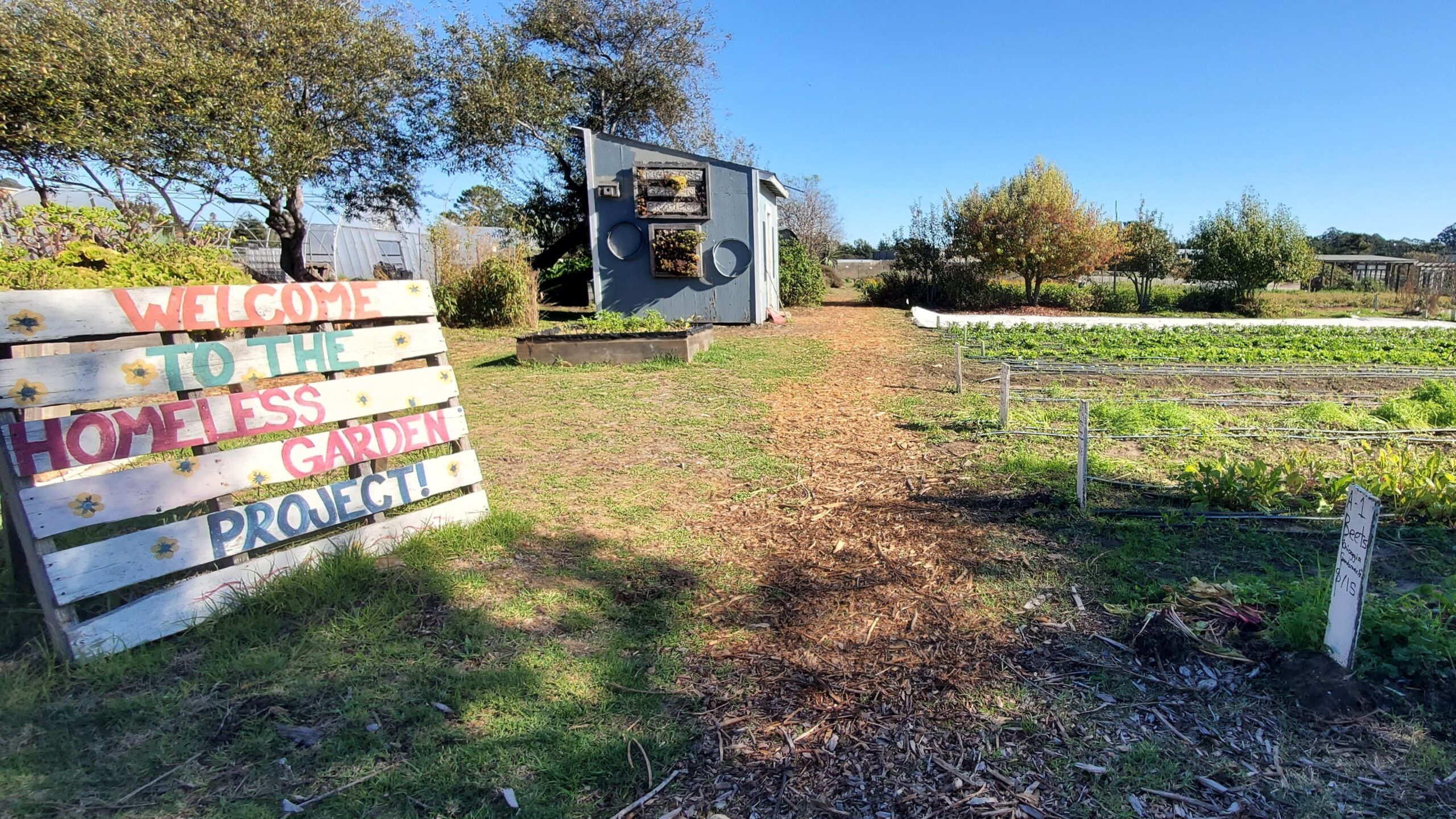
The Homeless Garden Project grows fruits and vegetables on Shaffer Road between Delaware Avenue and the railroad tracks in Santa Cruz. (Eli Ramos – Santa Cruz Local)
Mike Erickson, lead farmer at Homeless Garden Project, said it was great to secure the Shaffer Road location.
“This area is just so beautiful and some of the most primo land out here. It’s such a community catalyst with the bus stops right there,” Erickson said.
In 2002, Swenson had plans to build an “EcoVillage” where the farm stands on the Shaffer Road. However, the area is habitat for the threatened California red-legged frog.
The California Coastal Commission has prevented construction of permanent structures such as housing on part of the farm site near the railroad tracks because it is a riparian corridor for the California red-legged frog. Agricultural use is allowed, and the new property could allow buildings if authorities approve them.
The Homeless Garden Project started in 1990 on Pelton Avenue and moved to Shaffer Road in 1998.
In 1998, city leaders outlined a Pogonip Master Plan that included a potential Homeless Garden Project farming operation at the site. Later reports, such as the Pogonip Environmental Impact Report, similarly included plans for the Homeless Garden Project’s farm in the lower meadow of the Pogonip.
In 2018, Homeless Garden Project raised $3.5 million in a capital campaign to lease 20 acres of Pogonip from the city. Project leaders planned to move all operations permanently to the new site, but they were unaware of environmental problems. The site was used for skeet shooting — using shotguns to shoot a moving clay target — from the 1930s to the 1950s.
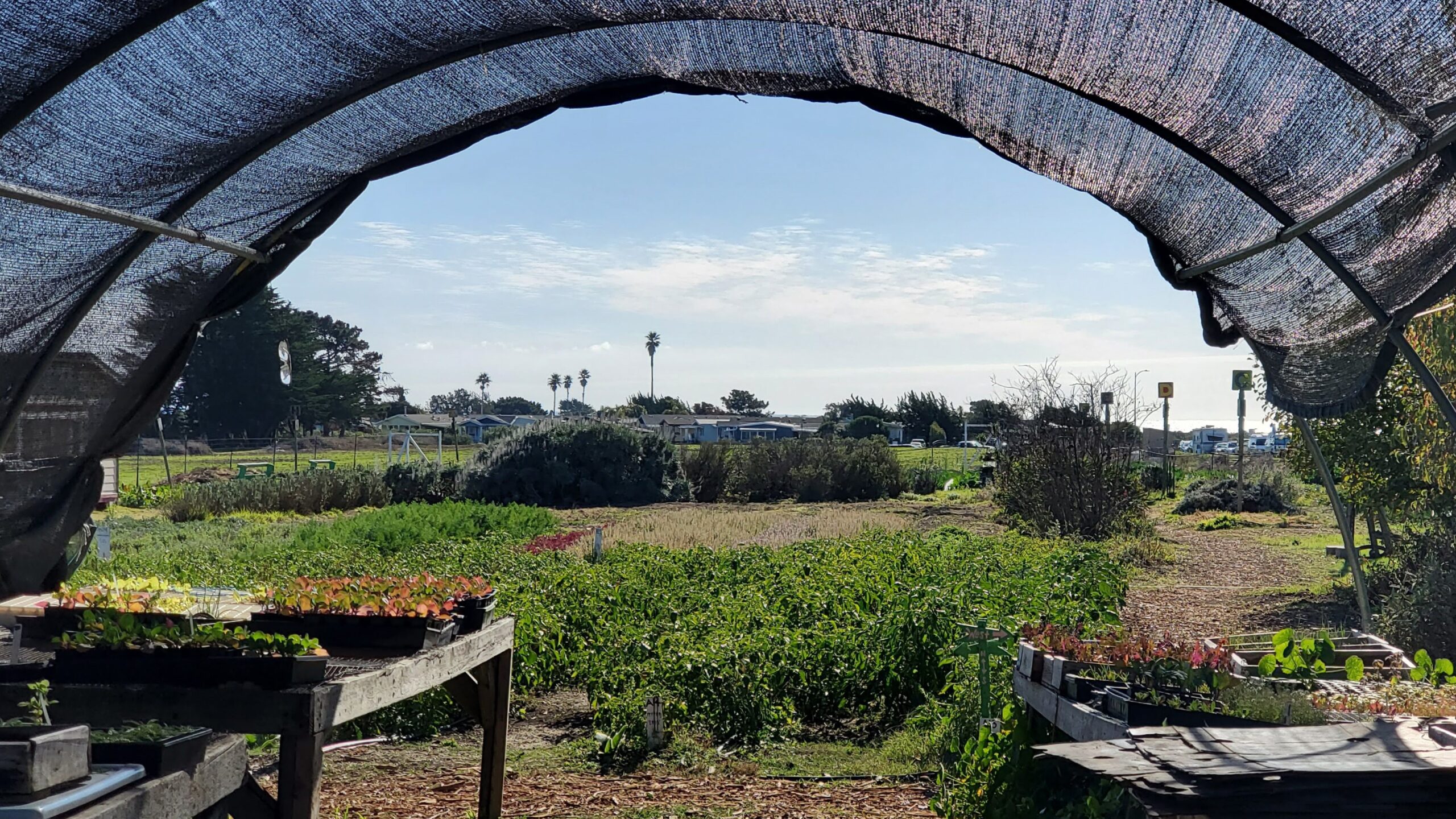
Leaders of the Homeless Garden Project hope to add an office, barn, greenhouse, kitchen and housing near its farm on Shaffer Road in Santa Cruz. (Eli Ramos — Santa Cruz Local)
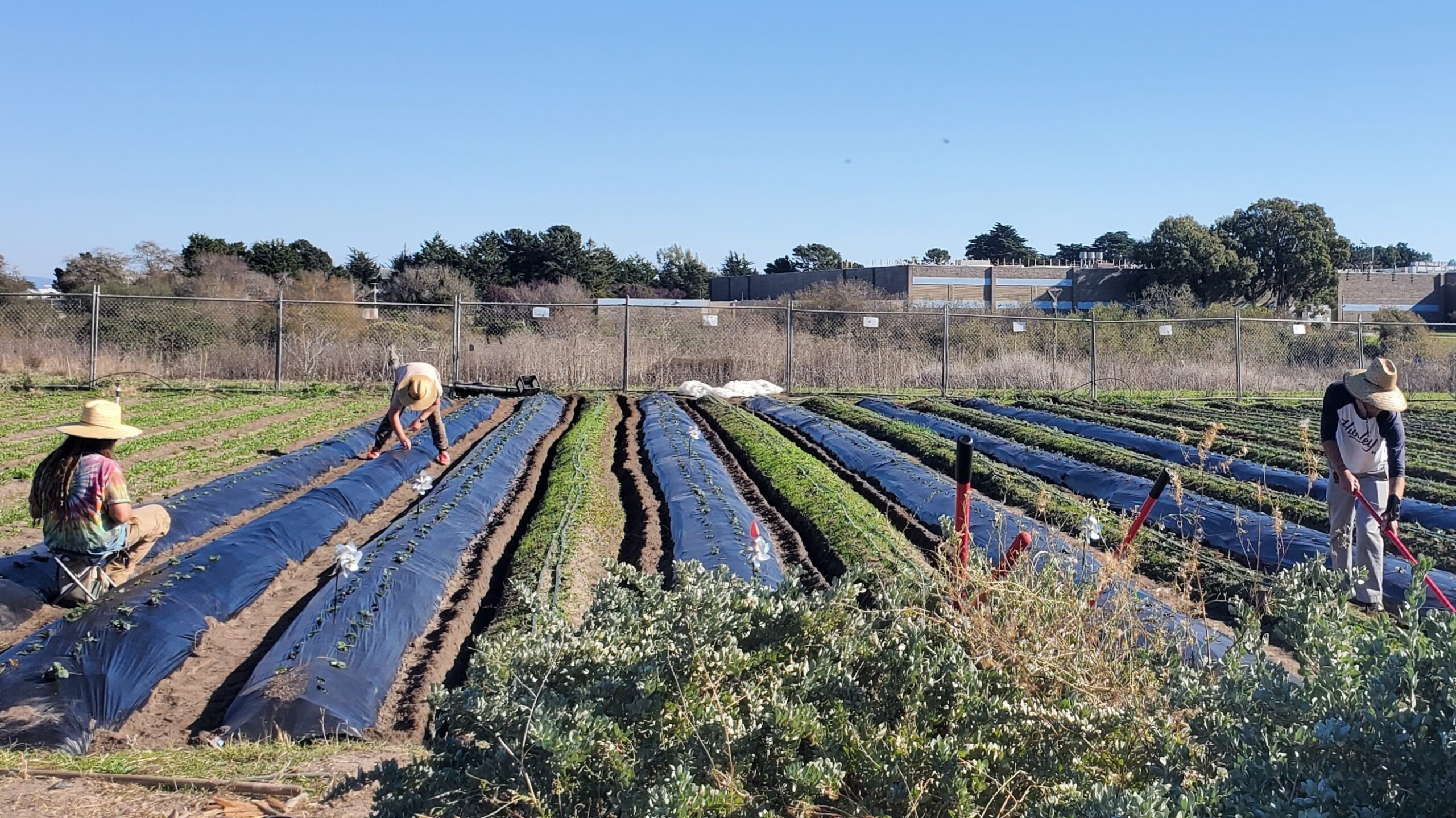
A crew covers strawberries for the winter at the Homeless Garden Project in Santa Cruz. (Eli Ramos — Santa Cruz Local)
Lead contamination from the shot used at the site was found throughout the soil at various depths. Dangerous chemicals known as polycyclic aromatic hydrocarbons from the clay targets were also found throughout the area. Both chemicals are at risk of leaching into the water in the nearby ravine and wetlands. Tests determined that only 4.5 acres of the 20 acres could be farmed.
Remediation costs for removal and disposal of the contaminated soil were estimated at more than $5 million, said Tony Elliot, director of Santa Cruz’s Parks and Recreation department. If the land were to be used as an open space or recreational area, soil treatment would be less intensive and cost about $1 million.
In 2021, Homeless Garden Project’s founder, Paul Lee, approached Swenson with a proposal to stay permanently at the Shaffer Road site.
Read more:
Pogonip farm relocation advances in Santa Cruz — Sept. 28, 2021
Questions or comments? Email [email protected]. Santa Cruz Local is supported by members, major donors, sponsors and grants for the general support of our newsroom. Our news judgments are made independently and not on the basis of donor support. Learn more about Santa Cruz Local and how we are funded.
Eli Ramos is a master's degree candidate at UC Santa Cruz's Science Communication program. Ramos has written for the Monterey Herald and Mongabay.


